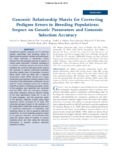Use este identificador para citar ou linkar para este item:
http://www.alice.cnptia.embrapa.br/alice/handle/doc/1003359Registro completo de metadados
| Campo DC | Valor | Idioma |
|---|---|---|
| dc.contributor.author | MUNOZ, P. R. | pt_BR |
| dc.contributor.author | RESENDE JUNIOR, M. F. R. | pt_BR |
| dc.contributor.author | HUBER, D. A. | pt_BR |
| dc.contributor.author | QUESADA, T. | pt_BR |
| dc.contributor.author | RESENDE, M. D. V. de | pt_BR |
| dc.contributor.author | NEALE, D. B. | pt_BR |
| dc.contributor.author | WEGRZYN, J. L. | pt_BR |
| dc.contributor.author | KIRST, M. | pt_BR |
| dc.contributor.author | PETER, G. F. | pt_BR |
| dc.date.accessioned | 2014-12-19T11:11:11Z | pt_BR |
| dc.date.available | 2014-12-19T11:11:11Z | pt_BR |
| dc.date.created | 2014-12-19 | pt_BR |
| dc.date.issued | 2014 | pt_BR |
| dc.identifier.citation | Crop Science, v. 54, p. 115-1123, May/June 2014. | pt_BR |
| dc.identifier.uri | http://www.alice.cnptia.embrapa.br/alice/handle/doc/1003359 | pt_BR |
| dc.description | Quantitative genetic analyses aim to estimate genetic parameters and breeding values to select superior parents, families, and individuals. For these estimates a relationship matrix derived from the pedigree typically is used in a mixed model framework. However, breeding is a complex, multistep process and errors in the pedigree are common. Because errors reduce the accuracy of genetic parameter estimates and affect genetic gain, it is important to correct these errors. Here we show that a realized relationship matrix (RRM) derived from single nucleotide polymorphism markers based on the normality of the relationship coefficients can be used to correct pedigree errors. For a loblolly pine (Pinus taeda L.) breeding population, errors in the pedigree were detected and corrected with the RRM. With the corrected pedigree, best linear unbiased predictor (BLUP) models fit the data significantly better for 14 out of 15 traits evaluated, and the predictive ability of the genomic selection models using ridge regression BLUP increased for 13 traits. The corrected pedigree based on the normality of the relationship coefficients improves accuracy of traditional estimations of heritability and breeding values as well as genomic selection predictions. As more breeding programs begin to use genomic selection, we recommend first using the dense panel of markers to correct pedigree errors and then using the improved information to develop genomic selection prediction models. | pt_BR |
| dc.language.iso | eng | eng |
| dc.rights | openAccess | eng |
| dc.subject | Genética quantitativa | pt_BR |
| dc.subject | Melhoramento genético | pt_BR |
| dc.title | Genomic relationship matrix for correcting pedigree errors in breeding populations: impact on genetic parameters and genomic selection accuracy. | pt_BR |
| dc.type | Artigo de periódico | pt_BR |
| dc.date.updated | 2015-08-24T11:11:11Z | pt_BR |
| dc.subject.thesagro | Parâmetro Genético | pt_BR |
| riaa.ainfo.id | 1003359 | pt_BR |
| riaa.ainfo.lastupdate | 2015-08-24 | pt_BR |
| dc.contributor.institution | Patricio R. Munoz, University of Florida; Marcio F. R. Resende Junior, University of Florida; Dudley A. Huber, University of Florida; Tania Quesada, University of Florida; MARCOS DEON VILELA DE RESENDE, CNPF; David B. Neale, University of California; Jill L. Wegrzyn, University of California; Matias Kirst, University of Florida; Gary F. Peter, University of Florida. | pt_BR |
| Aparece nas coleções: | Artigo em periódico indexado (CNPF)  | |
Arquivos associados a este item:
| Arquivo | Descrição | Tamanho | Formato | |
|---|---|---|---|---|
| 2014APIDeonGenomicRelationship.pdf | 570,76 kB | Adobe PDF |  Visualizar/Abrir |









